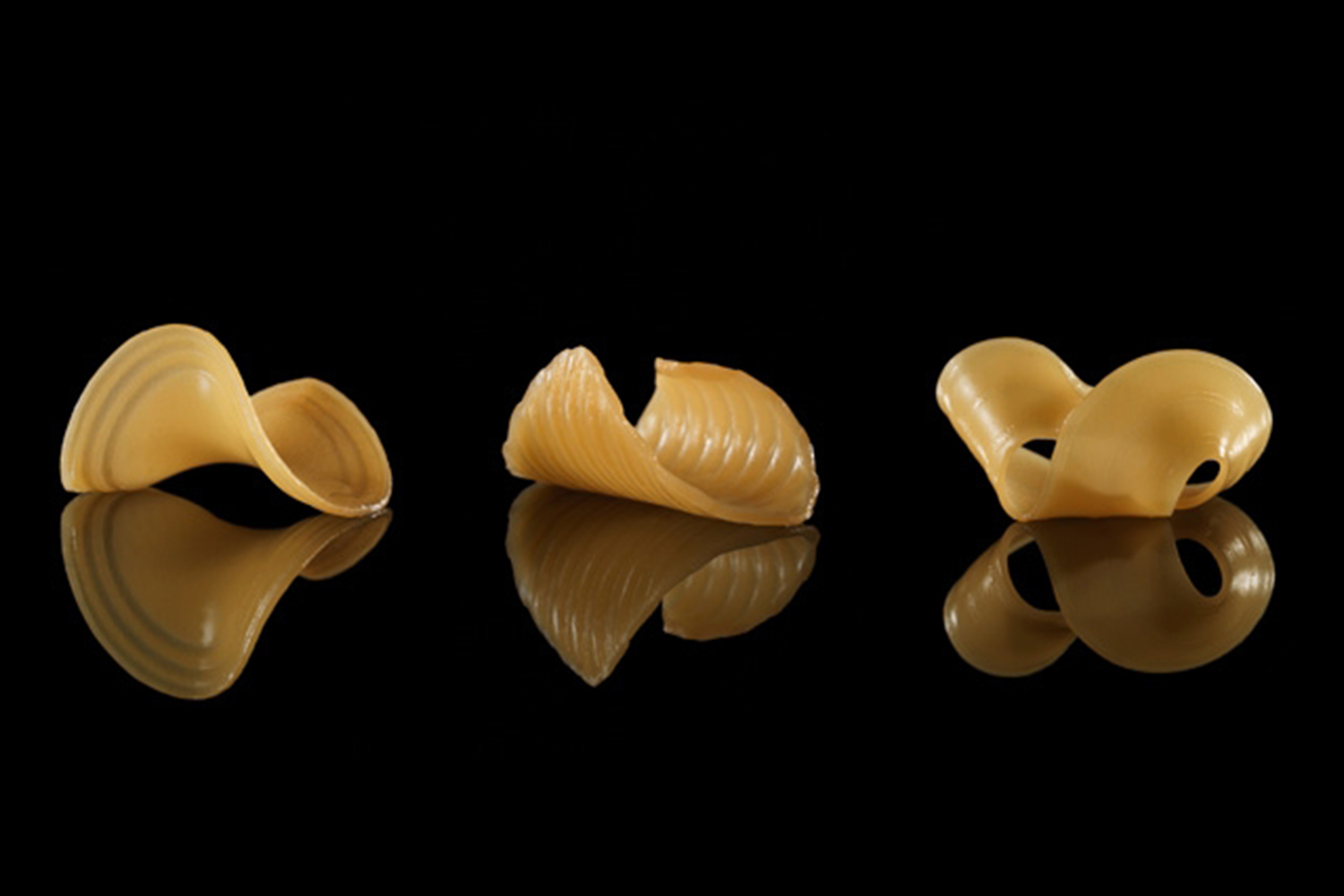Science fiction often inspires science and the case of the shape-shifting noodles is a prime example. “I got inspired by a movie,” Wen Wang, one of the researchers who developed the noodles, told Digital Trends. Wang had just watched Star Wars: The Force Awakens and had a sort of epiphany watching the scene where Rey turns powder and water into bread. “I wondered if it is possible to make a shape changing food through manipulating a foods water adsorption ability,” she said.
Wang teamed up with a colleague, Lining Yao, to develop flat sheets of starch and gelatin, giving them a special structure that allows them to take shape only when dunked in water. They were assisted by graduate students, Teng Zhang and Chin-Yi Cheng who developed a simulation platform that allows consumers to design their own pasta shapes.
Once dunked, the shape-shifting noodles may take many forms — from standard pasta shapes to flowers and horse saddles. Wang and Yao challenged a professional kitchen in Boston to cook and serve up their creations. The collaboration lead to some delicious dishes, like caviar wrapped in plankton and squid ink-flavored noodles.
The shape-shifting noodles may be fun to cook, but their more practical application could be in saving space and shipping costs.
“We found that lots of processed food, such as pasta, contains air in the package,” Wang said. “The 2D food reported in this project can be packed flat, so shipping costs will be saved. The transformation process from 2D to 3D will also provide the diners with great cooking and eating experience.”
Wang and his team presented a paper detailing the work was published this week at the Association for Computing Machinery’s 2017 Computer-Human Interaction Conference on Human Factors in Computing Systems.





